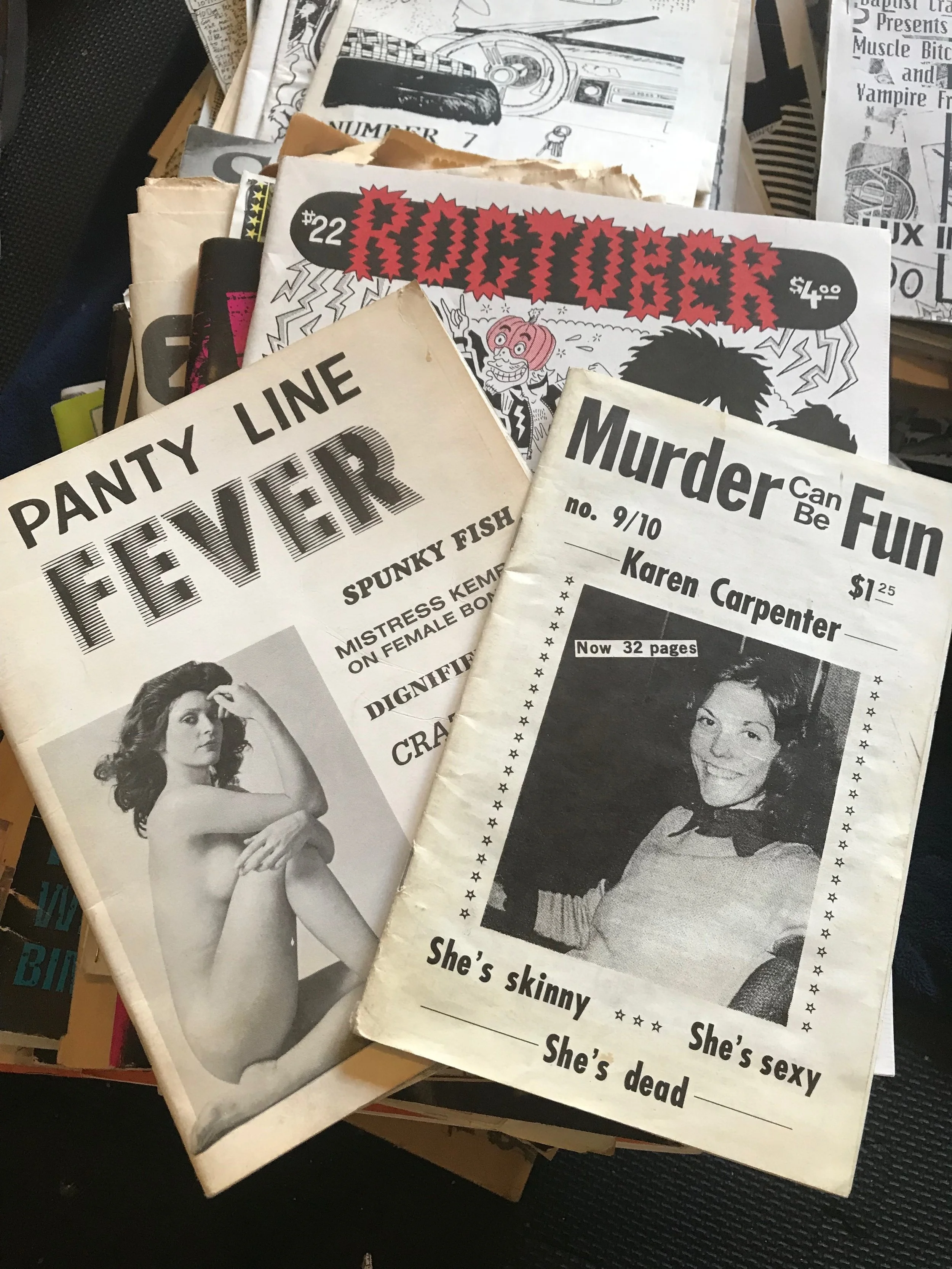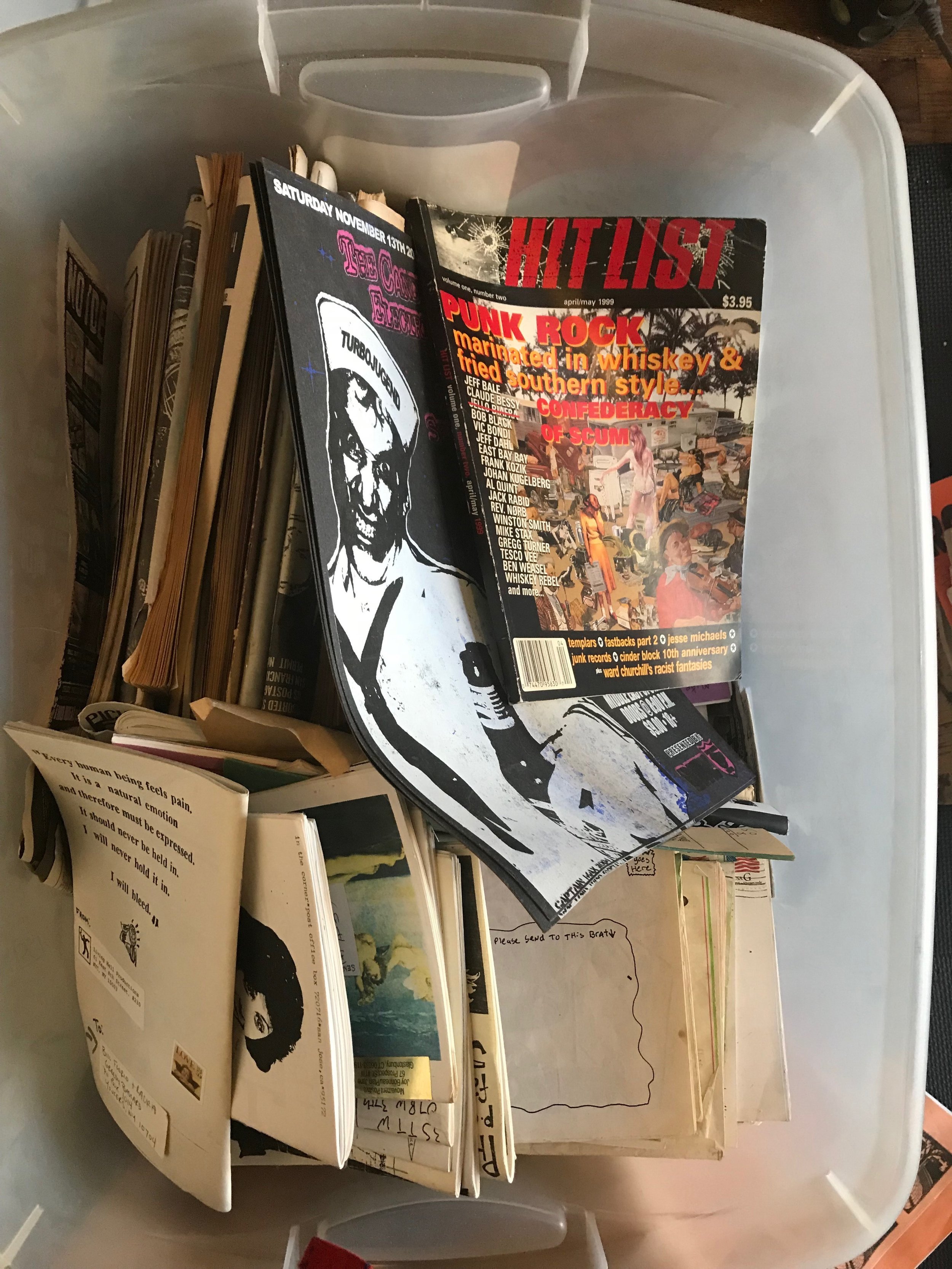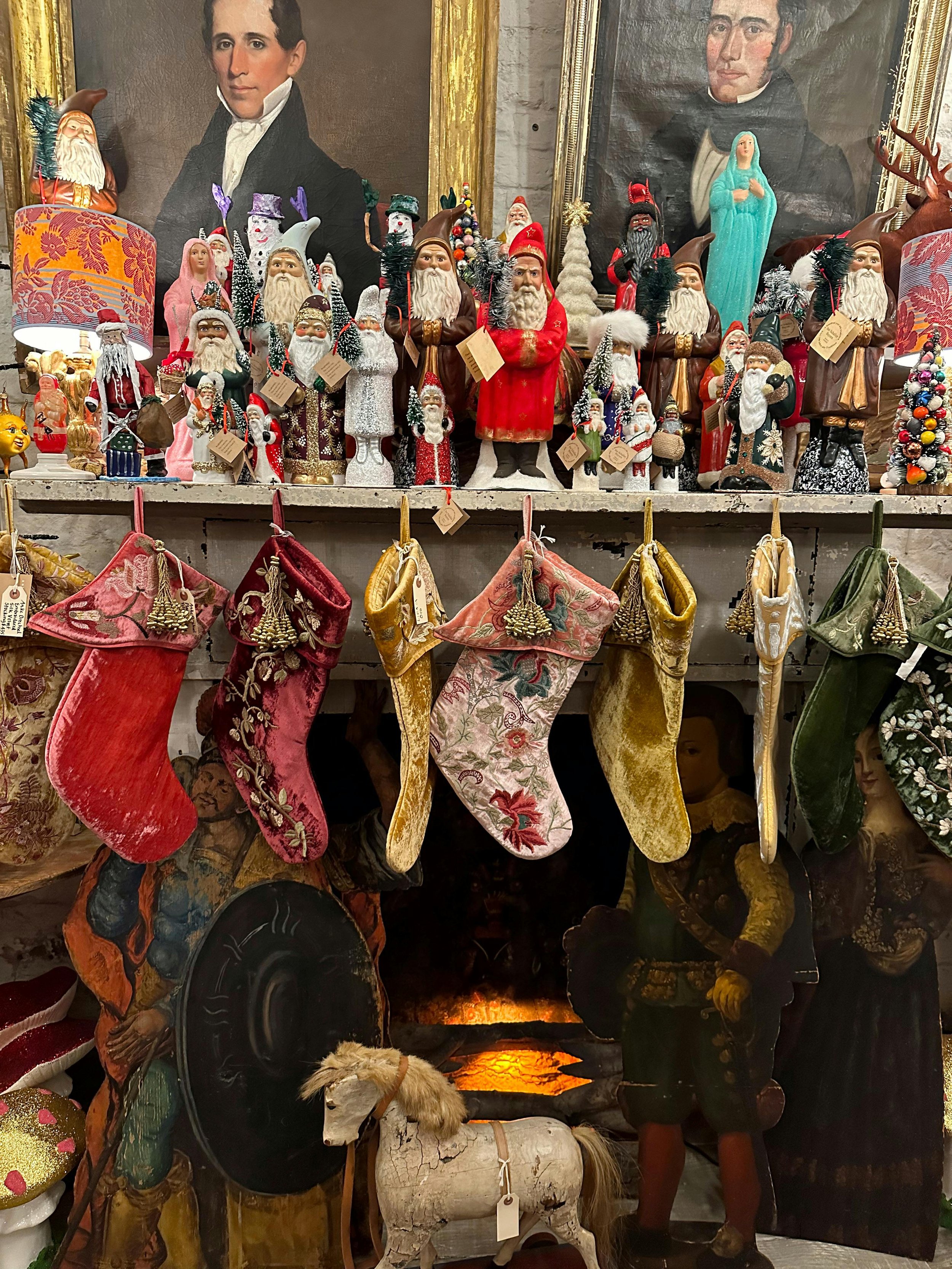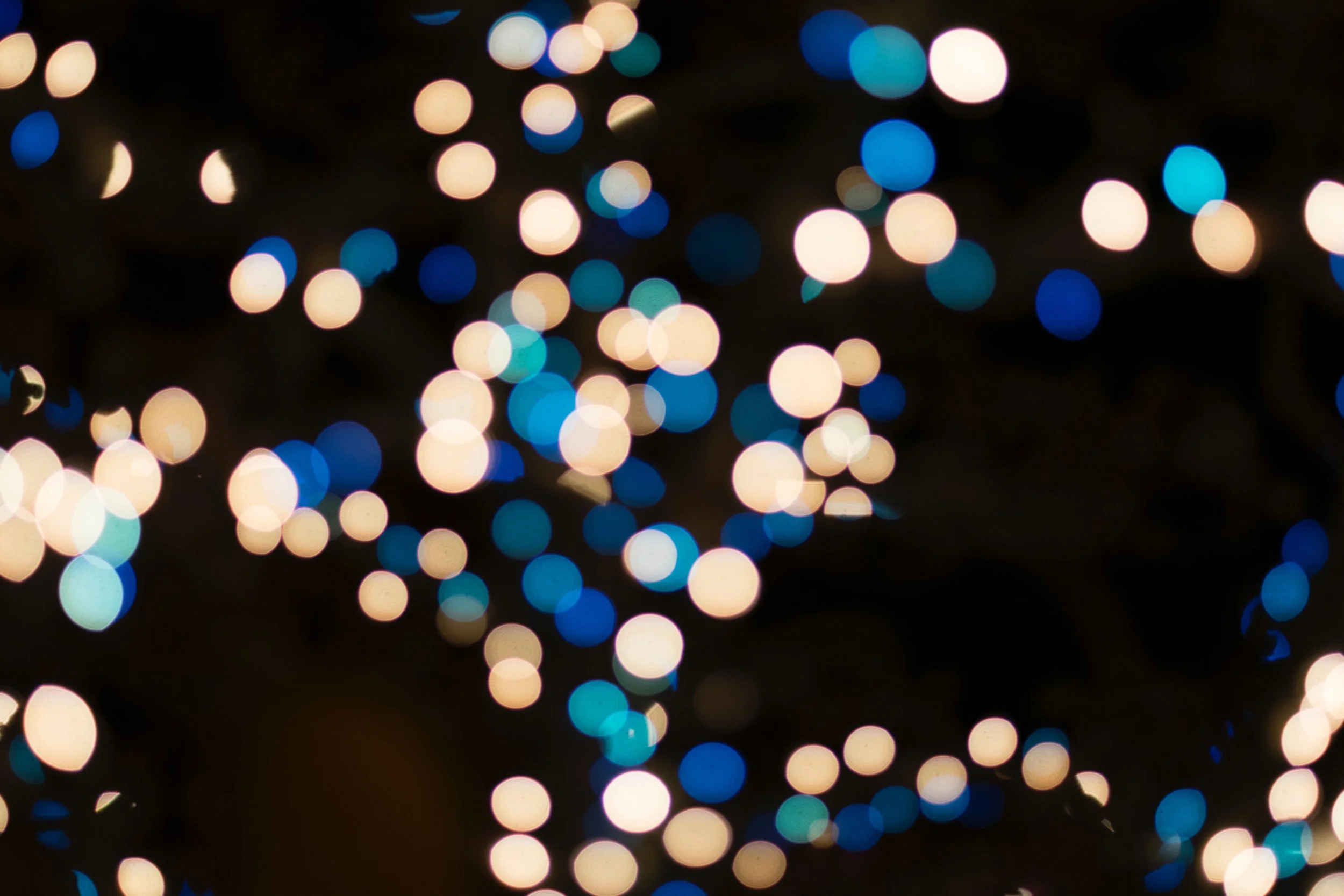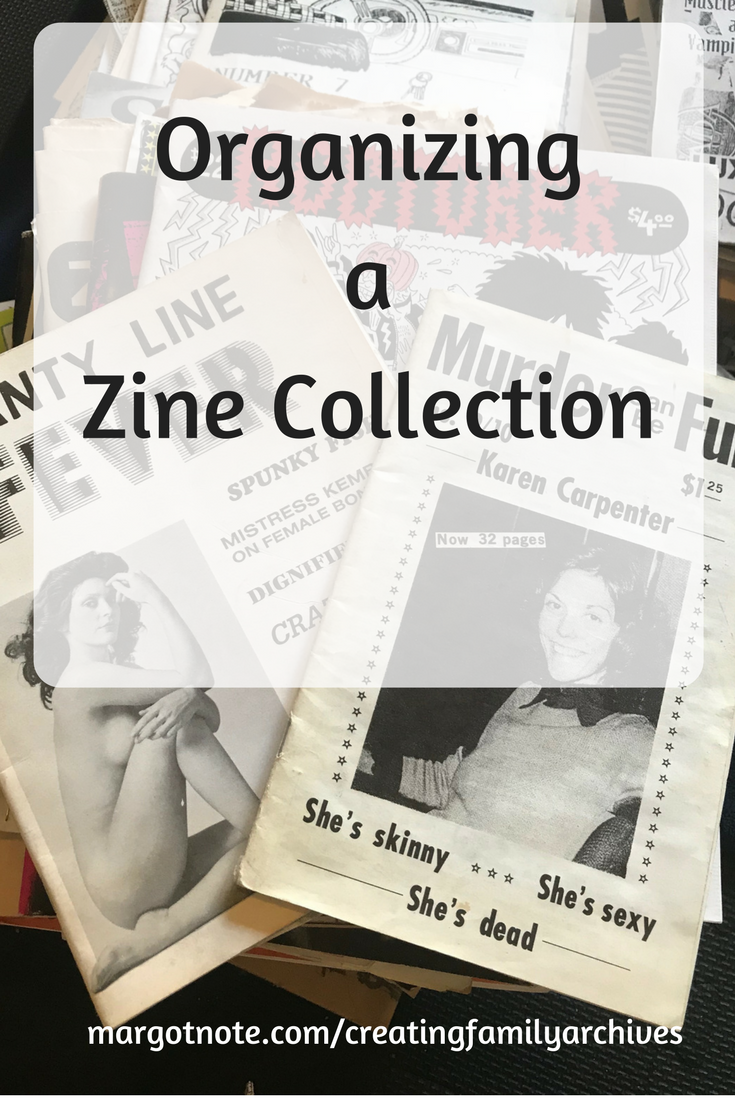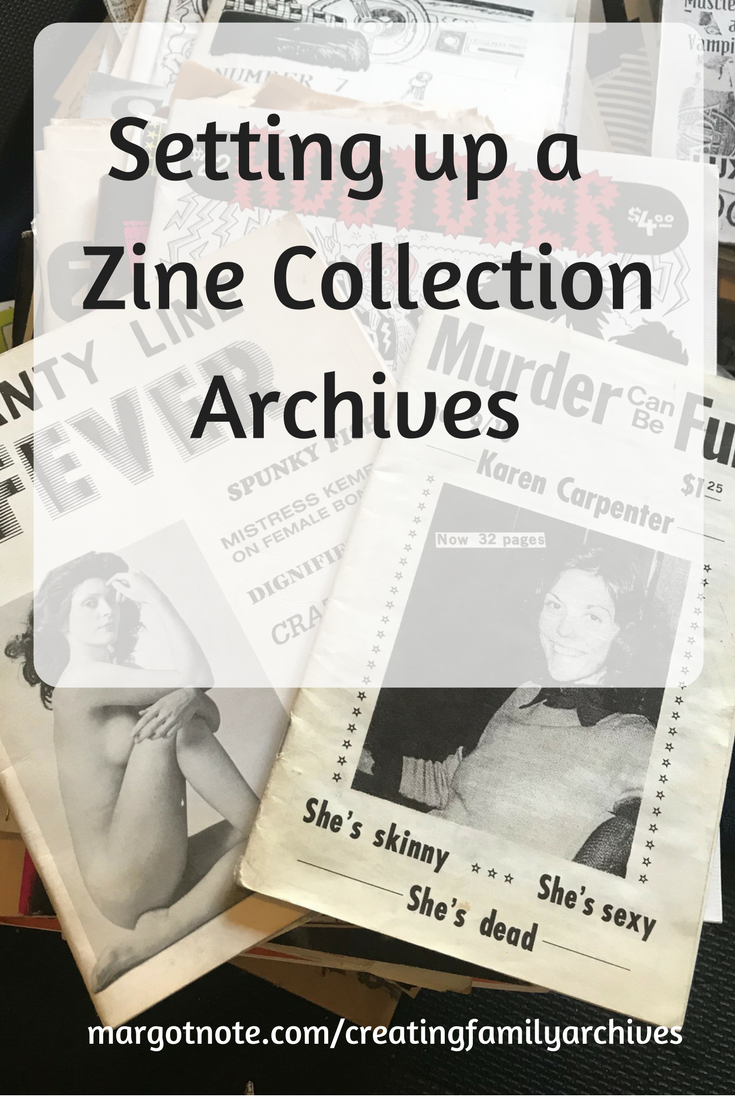A zine (short for magazine or fanzine) is a small-circulation, self-published work. Zines come in a variety of styles: photocopied, printed on cheap paper, or professionally printed. They could and were about any topic imaginable. My favorites were the punk and true crime-related ones. Extreme Noise in Minneapolis had a free zine bin that I happily dug through every time I visited, and I'd leave with the most interesting ones. Zines were particularly popular in the mid- to late-1990s, and were later replaced by blogs and social media.
Zines hold a special place in my heart because I created them in high school and college. By trading them with others around the United States, I felt more connected to a subculture and a little less lonely in the hellscape of suburban Minnesota that was my adolescence.
One of my zines was reviewed in Flipside, a punk zine I read cover-to-cover for years. My future husband, Bill Florio, editor of the somewhat infamous Greedy Bastard, traded zines with me and started writing to me while I was in highschool. We met in person near the end of college, dated long-distance, and then I moved in with him. The rest is history--and almost 20 years together!
(In the interview below, I talk about a Greedy Bastard interview with the Candy Snatchers that angered me so much I stopped writing to Bill for awhile. But he persisted and sent me the next issue. I looked back at the offending issue recently and realized that it's my favorite! Bill, of course, thinks this is hilarious).
Your zine acted like your calling card. When you traded or sold one, you were asking, "I'm into this. Are you into this too?" That simple act started a number of friendships, relationships, and marriages, I imagine.
Bill "Greedy Bastard" Florio. Photo by Jewel Frankfeldt Photography (Learn more here: hellojewelphoto.com)
I recently organized Bill's zine collection. Before that, I wrote a post about preserving band flyers, and stated:
Part of the mission of Creating Family Archives: A Step-by-Step Guide for Saving Your Memories for Future Generations is to bring archives to the people. Perhaps you're not interested in your genealogy or family history. The collections that hold the most meaning to you could be ephemera related to bands you've been in or watched live. The punks who regularly attended ABC No Rio or the Sunday matinee at CBGB's may have become your real family. Whatever your passion, preserve it!
I brought a similar attitude to this project. Not everyone is interested in family history, but you can apply the methods used to preserve family items to your personal history.
The zines were stored in piles in four plastic bins with no order and had been stored under a bed for about twenty years. Here's what they looked like when I started:
A bin of zines, including a Romper Stomper poster!
Another bin of zines
The covers of the bins had kept dust out, but some zines had been torn or damaged because of improper storage. Due to the zines' ephemera-like nature and their DIY aesthetic, I didn't get too precious about their conservation. For instance, I'm not fixing anything that's torn or interleaving pages with acid-free paper (as you would for older booklets or photo albums). Instead, I focused on stopping future damage by organizing, foldering, and rehousing them in better storage containers.
I worked in a small space, laying a blanket on the floor so I could maximize my work area. In an ideal world, I would work on a large, clean work surface; I know for my individual clients, especially, that that type of workspace is impossible. I believe in working within the limitations you have and making the most of them!
I divided everything alphabetically into 5 groups (A-G, H-L, M-Q, R-T, U-Z), then I organized each group alphabetically.
Sorting zines into alphabetical piles
I bought archival-quality banker's boxes and archival folders with a tab that goes across the length of the folder. The latter are my favorite because the length of the tab gives me a lot of room to write. I wrote the zine title on the folder in pencil so I could easily erase the title if needed. Pen isn't used in archives work because it can fade or smear and it can accidentally transfer onto the archival materials. I also don't use labels in archival work because the adhesive can loosen over time. I grouped the zines in folders by name and organized them chronologically by issue number.
I wrote the title on the folder, but the finding aid I created had the title, issue number, month and year, if I could find it. I'm a big fan of minimal labeling on folders. The purpose of a finding aid is to include as much information as you wish that you can update as you learn more information. Having to also change the information on folders is unnecessary.
In the middle of labeling and foldering
Zines don't include easy-to-find information like title, author, date, page numbers, location, and publisher the way books do. Whenever it wasn't obvious, I skipped information. For example, some zines didn't have dates or volume or issue numbers. I guessed at publishing dates if I could find postmarks or other dates.
I purposely didn't catalog the zines fully for a number of reasons. The first reason is because it is unnecessary. In my personal work and my archival work for clients, I aim for minimal viable processing because it keeps labor and resource costs low.
Another reason is a person's right to be forgotten. I don't believe something that someone created before the Internet should necessarily be easily findable on the web, especially when Googling their name.
Here's a real-life example: my best friend growing up wrote zines that are included in a university's zine collection as part of someone else's donated collection. She has since changed her name and has become an Orthodox Jew. A zine that she self-published as a teen explored her sexuality and gender that she sent to a small group of people is now cataloged for the world to access. I imagine that if she asked the university not to list it online, they would comply. Perhaps she doesn't know about it or doesn't care.
I chose not to include personal names of the editors or creators in my finding aid. The title is enough.
Download the Bill Florio Zine Collection Finding Aid.
Maximum Rocknroll, a magazine that Bill had a column in for many years, made up the about a third of the collection. Many issues were in poor shape and were missing covers. I organized them the best I could.
Organizing the zines brought up a surprising amount of emotions. I saw a lot of zines of my friends. I thought about the zines that I used to read and the ones that I created that I threw away years ago. I forgot about some of my favorite zines and issues.
The Black Issue of Ben Is Dead is my absolute favorite issue ever.
The Black Issue of Ben is Dead featuring Boyd Rice, Anton LaVey, Timothy Leary, Robert Anton Wilson, John Wayne Gacy, and Nicole Panter (manager of the Germs) is amazing. I also loved the second and third issues of Answer Me!, which are brilliant but I sold them for a nice price on eBay years ago.
The end result of zine organizing is a easy-to-find collection that takes up half the space that it originally did. More importantly, the materials are in safer storage, so that they can last longer without the risk of damage.
Have you ever gazed upon a more beautiful sight?
After I processed the collection, I interviewed Bill about his zines. The sound quality is not the best because I recorded it on my iPhone and our heater started banging crazily mid-interview. I've included timestamps to aid in listening.
00:05 "How do you define at zine?"
00:38 "When were they most popular?"
01:20 1996: The year zines broke
01:57 "What's the first zine you remember seeing?"
02:59 "Tell me about Smashin Through and Greedy Bastard."
05:10 "Fanzine ordering at Reconstruction Records was a thankless job."
06:09 "I can do better than these zines in a day."
06:30 Finding an authentic voice
07:10 Getting his sense of humor
07:50 How the issue of Greedy Bastard that made me stop talking to him is now my favorite!
08:40 "How were zine distributed?"
10:10 How being distributed by Tower made lifelong friends across the United States
12:30 "How many copies of each issue did you usually make?"
13:30 "It wasn't worth printing less than 2000."
14:00 How selling zines at shows for a quarter was a genius move.
15:00 Selling Bugout Society records at the Nassau Coliseum: "What the hell is this?"
16:00 Selling at a canceled Beastie Boys show to people on whippits
16:40 The best, the worst, the weirdest zines
16:50 Rev. Norb and (Sic)Teen
19:10 "Record reviews are horrible to do."
19:50 Answer Me's Jim Goad as a wrestling heel
20:51 "The GG Allin of publishing"
21:40 Murder Can Be Fun and thesis-level articles
23:09 Riot Grrrl influence (?)
25:30 The Riot Grrrl Showcase at ABC No Rio
28:40 Angry letters
29:14 "Do you want to talk about specific zines?"
29:22 Bullshit Monthly
30:40 Carter
31:35 Scam
32:28 Squat or Rot
33:25 "Don't-take-a-bath zines"
33:54 Combat Stance
34:40 Cotton Mouth
35:22 From the Diane Files
36:00 Hessian Obsession
36:21 Hickey and catfishing
37:15 Hit List as the anti-Maximum Rocknroll
39:10 "Tim [Yohannan] liked that reaction."
39:25 How to Stage Dive
39:40 Being threatened with violence from Ian MacKaye, Jerry Only, Paul Bearer, and Jello Biafra
40:24 Winning fanzine of the year by New York Press
40:45 Nice Hair
40:59 Nine Inch Toenails
41:18 Panty Line Fever
41:33 Surprised by the nakedness
42:10 Generational changes
43:49 Probe: "One of my favorite zines not because of the nudity."
44:30 Roessiger
44:40 Beer Frame
45:01 Zine writers who got book deals
47:00 "If someone is a good writer, they can write about anything."
48:09 Snak Fud
48:20 Weston's zine
48:39 Touch 'n' Go
49:00 Fake hate letter
49:32 David Duke's "zine" and a racist carpenter
51:00 "What are the lasting effects of zines?"
56:00 Punk rock Italians and Punk rock Jews
57:40 Calling Dee Ramone, Henny Youngman, and Mike D.
58:56 "The absence of malice is truth."
I loved working on this project because it combined a subject that I loved with my skill set as an archivist. Do you have a collection that needs similar organizing? Do you need help with determining priorities and a preservation plan? Or would you like for me to archivally process a collection for you? Contact me and we can discuss how I can help!
To learn the preservation secrets used by libraries, archives, and museums to protect their priceless materials (that you can also use for your family heritage items), read my book:
Ready to get started creating your family archives? Here are some of my favorite products:
